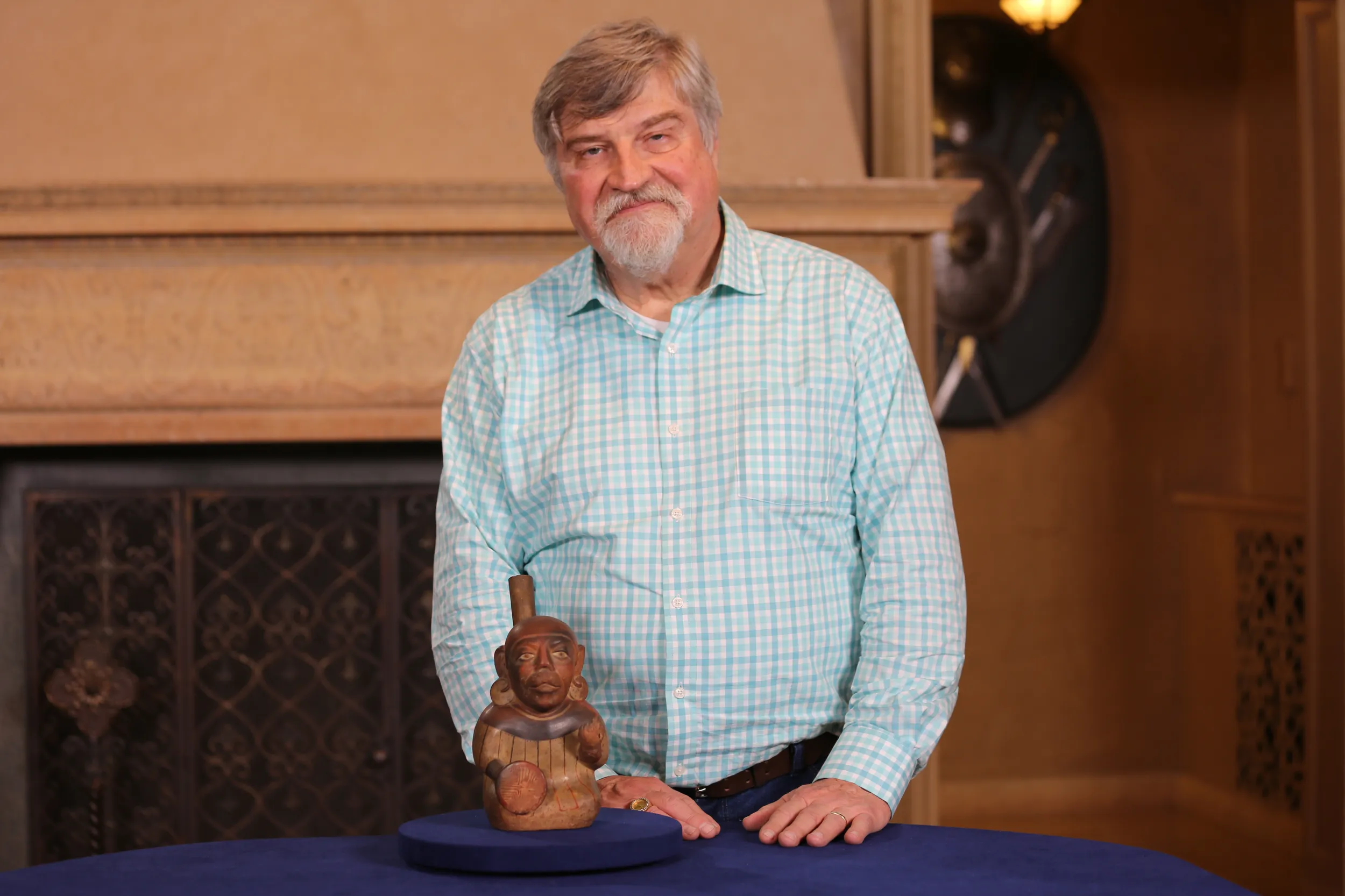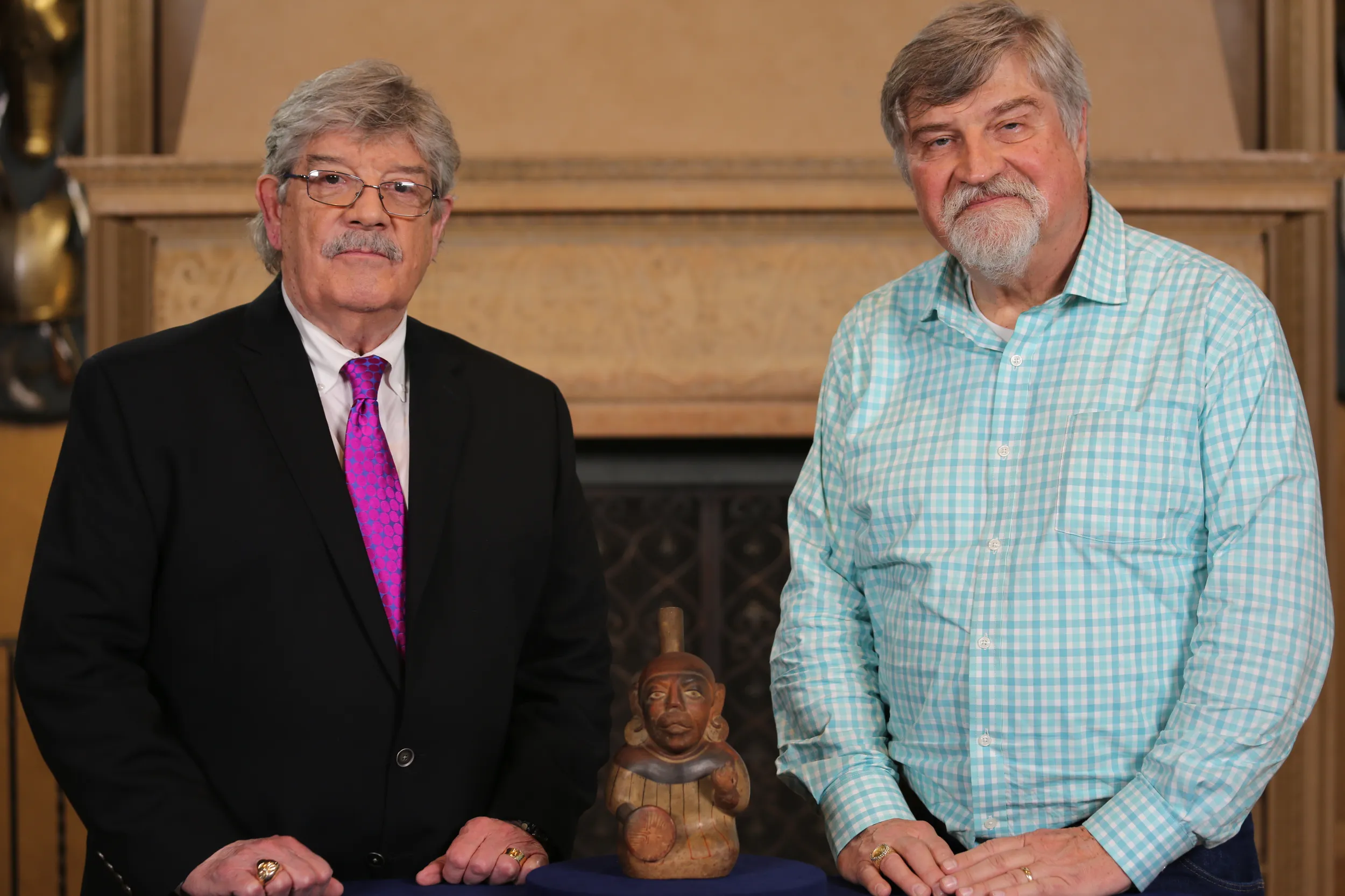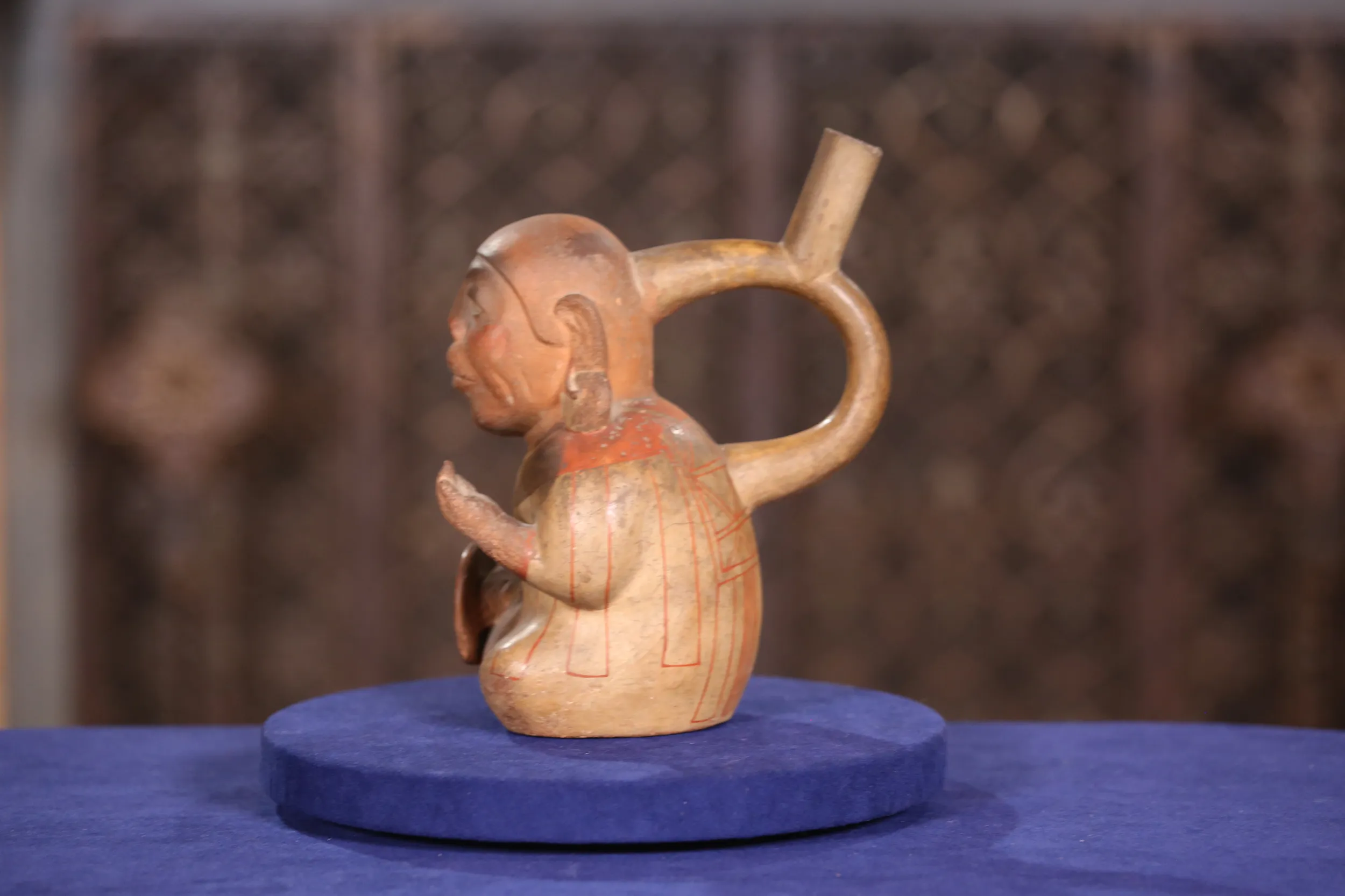GUEST: It was my great-grandfather's. Before the Civil War, he worked for the consular service, and he was in Peru and Mexico studying silver mining techniques. Then he was in Tahiti. And he picked up things and collected them in his travels. And then, when the Civil War broke out, he went back to California and enlisted in the Second California Cavalry. He had a little display cabinet with things he picked up in his travels, and this was one of them. And all my dad knew about it and what he told me was that that was Grandpa's Inca pot.
APPRAISER: So, that was it? That was all the information that was passed down?
GUEST: That's all the information we have. I believe he probably got it before the Civil War. It's been in the family all that time.
APPRAISER: Well, I can tell you, I've been doing this for 44 years, and nobody has ever said to me, "And by the way, this pre-Colombian piece was collected before the Civil War." That's just extraordinary. And that's really special. First of all, the Inca would be more like 1200 to 1500 A.D. This is actually about a thousand years before that.
GUEST: Oh, really?
APPRAISER: Yeah, this is Moche, and this is from northern Peru. The straight spout here is typical of what we see on pieces that date from A.D. 300 to about 500. The figure itself is very interesting. It's clearly some sort of a warrior. We see the shield here, and then this finger where he's pointing like this. I suspect that he's some sort of a warrior. This would be called a Moche stirrup vessel.
GUEST: What would it have been used for?
APPRAISER: Well, this was an object that represented this particular individual, and it might have actually been placed with him as it accompanied him to the afterlife.
GUEST: Okay.
APPRAISER: A piece like this is actually a mold-made piece. So, it's molded. It's not something that's modeled completely by hand. The pigments are all the natural pigments that they get... get from plants and... and minerals. And then, it would be burnished and fired. Now, I'm just going to turn this thing so that the camera can see the entire piece. And one of the things we look for on an object like this is condition. You have a little bit of abrasion on the head. It has a little bit of pitting. But for something that is as old as it is, that's really extraordinary. And you can see this very elaborate costume in the back. I'm fascinated with the mustache. What this indicates to me-- and this is speculation, I'll admit-- I think this possibly could be a particular individual that lived during that time, which I think is... is really exciting. I feel, at a good auction, this is $3,000 to $5,000.
GUEST: You're kidding!
APPRAISER: No.
GUEST: I think we'll put it in the china cabinet instead of on top.















